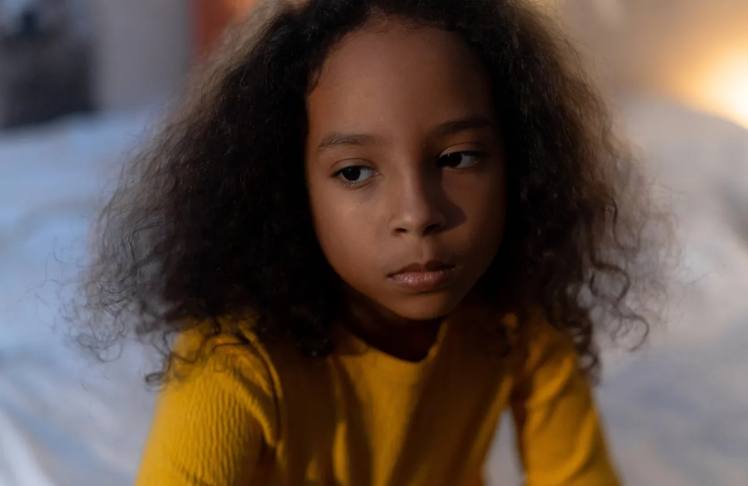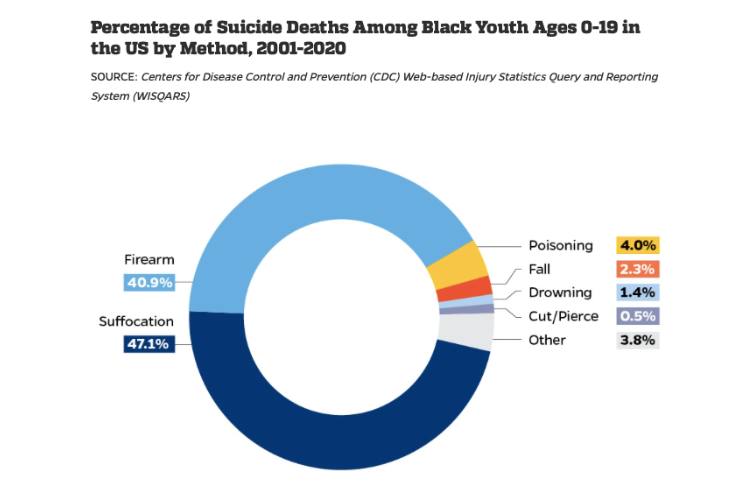
Trigger Warning: This article contains details and data regarding self harm and suicide.
Historically, suicide rates among Black youth have been lower than other races and ethnicities. But lately, that’s been changing.
A recent report by Johns Hopkins Bloomberg School of Public Health found that suicide rates for Black youth ages 10-17 more than doubled between 2007 and 2020.
The researchers called the 144% increase “alarming” and attributable to various “sociecological factors and structures — including institutional racism.”
The August report broke down the risk factors for Black youth, as well as provided recommendations for culturally-competent prevention methods.
“Black youth have the fastest rising suicide rate among their peers of other races and ethnicities,” the authors wrote. “Even more disconcerting, we may not have the full picture of how suicide deaths are impacting Black youth due to misclassification errors.”
What the Numbers Say
Suicide impacts both Black boys and girls, but Black boys ages 0-19 have more than twice the suicide rate of Black girls in their age group, according to the Centers for Disease Control and Prevention (CDC). Other research notes Black boys are more likely than Black girls to attempt suicide and by more lethal means.
A 2021 survey by the CDC found that one-in-five Black high school students reported seriously considering attempting suicide in the past year. Nearly 18% made a suicide plan, and 15% reported attempting. Close to 5% needed medical attention in response to their suicide attempt.
The Role of Gun Violence
Referencing data from the CDC, the Johns Hopkins report “Still Ringing the Alarm” explains that guns are among the most common methods of suicide among Black boys ages 0-19. For nearly two decades, suffocation has been the leading cause, followed by firearms.

A general exposure to guns raises the chances of suicide. Black youth, who are more likely to live in poverty than other groups, are “affected both firsthand by police violence and through secondhand exposure through family and community members.”
“Constantly being exposed to people who share an identity with you being killed and brutalized by the state can be traumatic,” the authors wrote.
The trauma of police violence, and the often lack of justice thereafter, creates additional stress and trauma for Black youth, raising the risk for suicide.
Other risk factors include the school-to-prison pipeline and mass incarceration.
How to Save Black Youth
In 2019, the Congressional Black Caucus (CBC) established the Emergency Taskforce on Black Youth Suicide and Mental Health. The working group of reseachers, politicians, pastors, and others released the “Ring the Alarm” report, detailing the state of Black youth suicide.
Researchers at Johns Hopkins seek to add to their groundbreaking efforts.
“Though there is more literature contributing to the field’s knowledge and understanding of Black youth suicide since the CBC ‘Ring the Alarm’ report was released, gaps still exist, especially pertaining to culturally responsive interventions,” the authors wrote.
The team suggested seven methods for suicide prevention:
- Ensure that small community-based organizations and Black researchers have clear access to suicide prevention research and implementation funds.
- Increase the amount and availability of funding for suicide prevention research and implementation.
- Create safe and supportive spaces for Black youth.
- Evaluate the implementation of the 988 National Suicide Prevention Lifeline to understand the impact among Black youth and other communities of color.
- Understand the role financial concerns play after hospitalization and in accessing follow-up/transition care. Reduce financial concerns about involuntary hospitalization.
- Make mental health services more accessible.
- Engage the Black church in suicide prevention initiatives.
“While not an exhaustive list of protective factors for suicide among Black youth, the authors recommend considering religiosity, social support from peers and families, and cultivating a strong racial identity are important to develop culturally responsive approaches to Black youth suicide prevention,” the university wrote.















